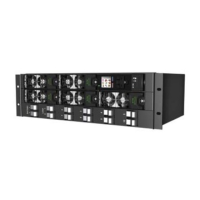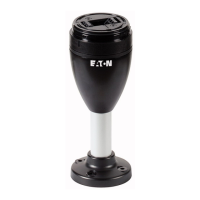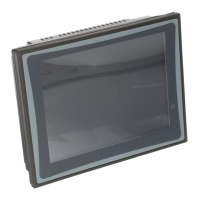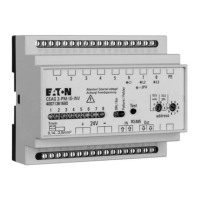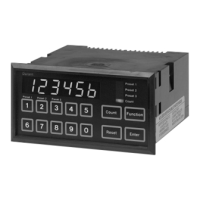SM65 Supervisory Module Handbook
34
Copyright © 2004-2009 Eaton Corporation. All Rights Reserved.
IPN 997-00012-35E December 2009
Setting Up SNMP Traps
The SM65 supervisory module can be configured to send alarms as SNMP traps to up to
eight different SNMP trap receivers on a Network Management System (NMS).
► To send alarms as SNMP traps
1 Set up Ethernet Communications (see details on page
33).
2 In DCTools go to Configuration > Communications > SNMP.
3 Do not change the default settings of SNMP Read Community (public) and SNMP Write
Community (private), unless requested by the network administrator.
4 Set the sysObjectID of a Power System, if required. This is a unique Object Identifier that
allows a network management system to identify the type of device (in this case a power
system) on the network.
Objects are named in the iso.org.dod.internet.private.enterprises (1.3.6.1.4.1) sub-tree for
enterprise-specific objects. The default Object Identifier for an SM65-based DC power
system is: 1.3.6.1.4.1.1918.2.12
A network administrator can specify a new Object Identifier within the (1.3.6.1.4.1) sub-
tree, if required.
Do not enter the sub-tree integers 1.3.6.1.4.1 into the System Object ID field.
5 Set Trap Version to SNMP V1, V2, V3 as required.
6 Set Trap Format to Eaton or X.733 as appropriate (Requires SM65 v4 or later).
"Eaton" format uses different trap numbers according to the alarm source. X.733 format
uses a single trap number for all alarm sources.
7 Configure Trap Repeat and Trap Repeat Rate as appropriate.
8 For each SNMP trap receiver, configure the following parameters.
Parameter Configuration Guidelines
Name Enter the name of the SNMP trap receiver (20 characters maximum).
Level SNMP Trap Level – controls reporting of specific events for each receiver:
• Select All Events And Alarms to receive events and Critical, Urgent and Non-urgent alarms.
(Typically events are status messages such as Equalize Active.)
• Select Urgent And Non Urgent Alarms to receive Critical, Urgent and Non-urgent alarms.
• Select Urgent Alarms Only to receive only Critical and Urgent alarms.
• Select Critical Alarms Only to receive only Critical alarms (Requires SM65 v4 or later).
• Select Disabled to temporarily disable notifications to the receiver.
IP Address IP address of the trap receiver assigned by the network administrator.
Port The default setting is 162. Do not change this setting, unless requested by the network administrator.
Trap
Community
A form of password. Use public, unless the network administrator has assigned a new password.
Mode Select:
• Normal Traps for sending traps to any network management system, except PowerManagerII
• Acknowledged Summary Trap for sending traps to PowerManagerII only
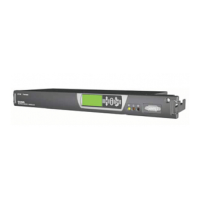
